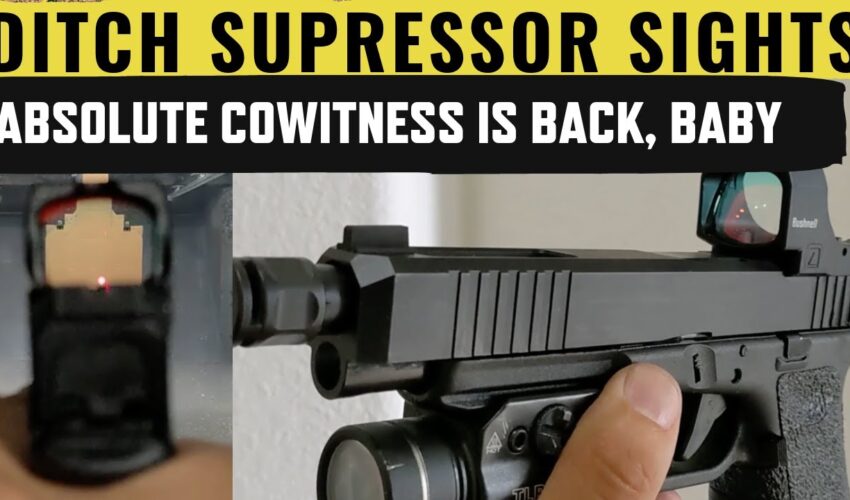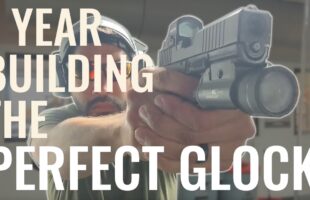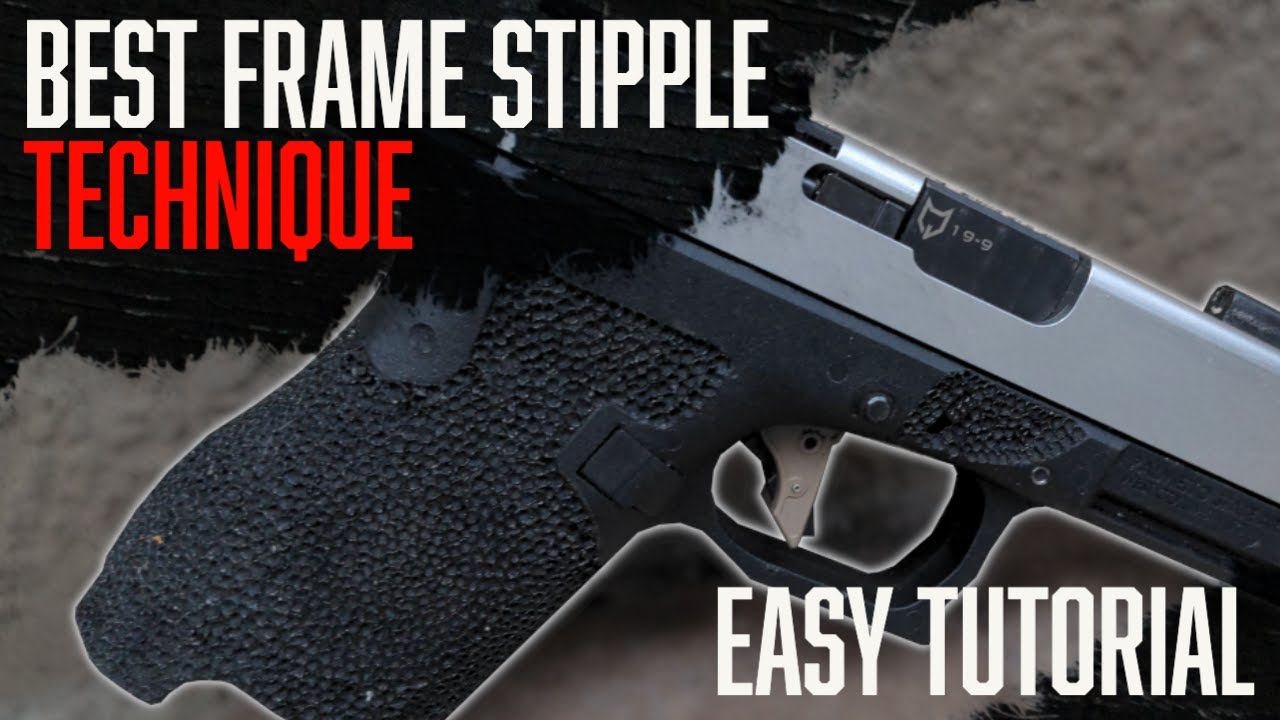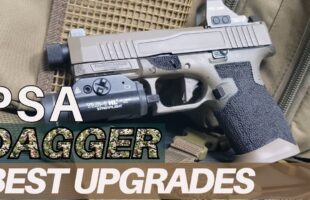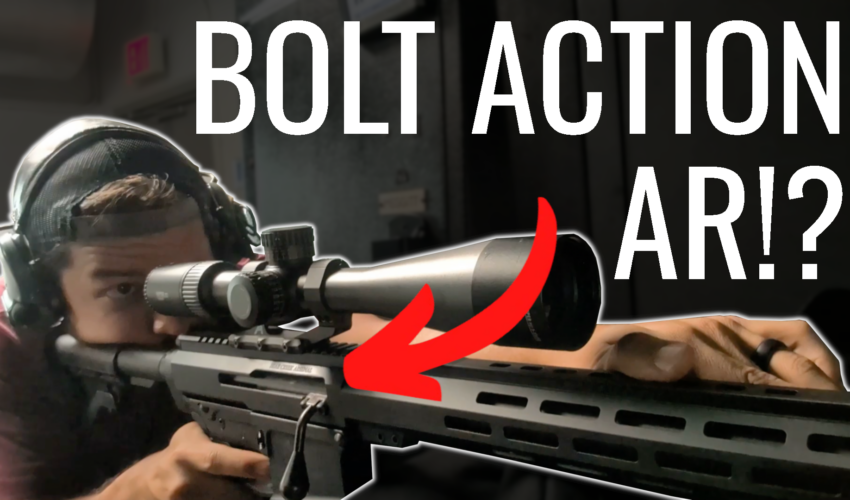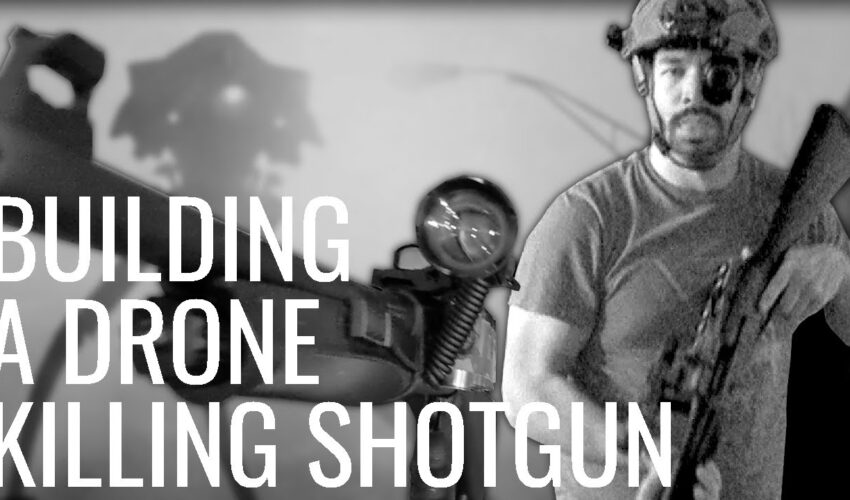Why you should absolute cowitness your red dot to your iron sights
A lot of people online will tell you to never cowitness your pistol red dot with your iron sights. This is because historically, doing so will result in you just using your irons with the red dot essentially verifying your zero. Or worse, you could have obnoxiously tall supressor height irons that obscure the dot. You basically zero your red dot above your point of impact and then hold over for all of your shots using kentucky windage.
I understand the argument, I really do. If you cowitness your red dot to your irons, you might find yourself just using the irons and the red dot becomes a third data point. So you aren’t getting any of the benefits of having a red dot, so the argument goes.
But I don’t think this makes sense, because most pistol red dots today are designed to be parrallax free at a certain distance. This means that no matter where you see the dot, it is essentially always covering approximately point of impact because of the curvature of your glass. Any deviation in parralax will be minimal enough that you will generally speaking be combat accurate. So unless you have sky high supressor height sights, cowitnessing your dot to point of impact makes sense, as it is your primary sighting system.
Essentially my argument is, if your irons are backups, why should your irons get the absolute cowitness?
Shooters are now ditching irons all together, but there’s a better solution
Lately, the trend seems to be shifting in that direction, so instead we see shooters completely ditching iron sights all together and only running red dots on their pistols.
In this video I’m going to make the case that there is a solution to this problem, that doesn’t involve you ditching your irons, and doesn’t involve you zeroing above point of impact with weird hold over or obscuring your sight picture with giant supressor height sights.
You shouldn’t use supressor height sights, oftentimes you don’t have to
The case I’m making is that if you aren’t running a can on your pistol, you should be extremely intentional when selecting the most precision irons that you can for your particular slide and optic combination, to achieve the lowest possible iron sight profile so as to not obscure your red dot window.
How do we do this? Well it begins first with understanding the problem with pistol mounted red dot optics. Most models today, with the exception of the Holosun SCS and the Holosun EPS, both of which are designed to have very low footprints, have thick bases that typically house either the battery or some electrical components for the optic. This causes the red dot to obscure stock irons on a lot of builds, which results in the need for supressor height sights in order to still use your irons as backups to your red dot.
The problem is made worse with adapter plate systems. The adapter plates raise the height of the optic, which all but guarantees the need for sky high irons. So many of us just ditch the irons all together in favor of having a better sight picture.
Getting a low cut slide is key
But imagine if you could have a slide cut low enough that it negates the footprint of your red dot optic. This is how the Brownell’s RMR slides are cut. The design is unique, I believe patented by Zev technologies, so also appears on Zev slides, but the Brownells slide is much cheaper. I got my Brownells Glock 19 slide on clearance for $100, which is an absolute steal. The recoil lugs hold the RMR optic securely in place which has a few advantages. 1) The optic will not be putting the same level of strain on the screws, which tend to sheer off at some point around the 5 to 10k round mark if not replaced, a problem exascerbated with two points of failure in plate mounting systems. 2) The slide can be cut even lower without the screws entering the safety plunger channel since the recoil lug is higher, a common issue on RMR cut glock slides with long screws. 3) Most importantly, the slide cut itself can be cut really deep. Brownells cuts these all the way down to just minimally above the extractor.
That gives us a really unique advantage over other mounting solutions. Your optic, even ones with thicker bases, will sit lower versus your irons, negating the need for supressor height sights.
Now depending on the red dot choice, standard height irons probably won’t cowitness still over the optic. This was definitely the case in my Glock 19 build with standard glock sights. To my knowledge, there isn’t an RMR footprint optic on the market that sits as low as the Holosun SCS or EPS models currently. So the answer is to get irons that are fine tuned as far as height goes for your slide and optic of choice combination.
Dawson Precision Sights are tailor made to be the perfect height for your slide and optic
That is where Dawson Precision comes in. Dawson Precision makes iron sights that come in a variety of sizes so you can come up with a solution that fits your particular slide and optic combination perfectly. They offer their sights in different sizes and configurations including different dot patterns and night sights for different needs.
For both budget and my own needs, I choose blacked out irons as I want them to not be distracting, as if I wasn’t running irons at all, and affordable. This combination cost $40 shipped.
I’ll have the link to this exact build in the description. But here I’m running dawson precision irons, on a brownells RMR glock 34 slide, with a Bushnell RXM-300.
My dawson precision sights sit just high enough to cowitness above the base of the optic. For all intents and purposes in regular shooting, I don’t even see them. But if I unintentionally turn off my red dot, I can still use them with a combat hold as backups. For me, this is perfect, they truly are last ditch backups. I’m not sacrificing anything about my preferred configuration on my primary sighting system, for the sake of my backup sight system. Yet i’m not screwed either if something goes wrong with my primary optic.
Dawson Precision Sights are now my Preferred configuration
So guys, this is by far my preferred configuration now for a lot of builds. I’m going to be picking up dawson precision sights for my Glock 19 build next.
For my concealed carry context, I’m running a Holosun EPS. I’ve talkied about this in my slide cut video, but I got my Glock 26 cut for a 507K footprint, which the EPS uses. That direct slide mill combined with the low profile of the EPS makes my standard height trijicon irons cowitness just fine, which is awesome for concealed carry. This is another great solution if you have a direct milled shield RMSC cut.
Lastly, the same can be accomplished if you’re running an MOS cut with the Holosun SCS.
One day I hope a company will come out with an extremely low profile RMR cut optic. Something like the SCS but in an RMR footprint. If that happens, I think it will be game changing. However, until that happens, this Brownells RMR + Dawson Precision + whatever optic is my flavor of the day is working out really well and I think its the best compromise with what products are available on the market now.
I hope this video was helpful to you, if it was pleace consider subscribing to the channel. I hope you all have a great day.
